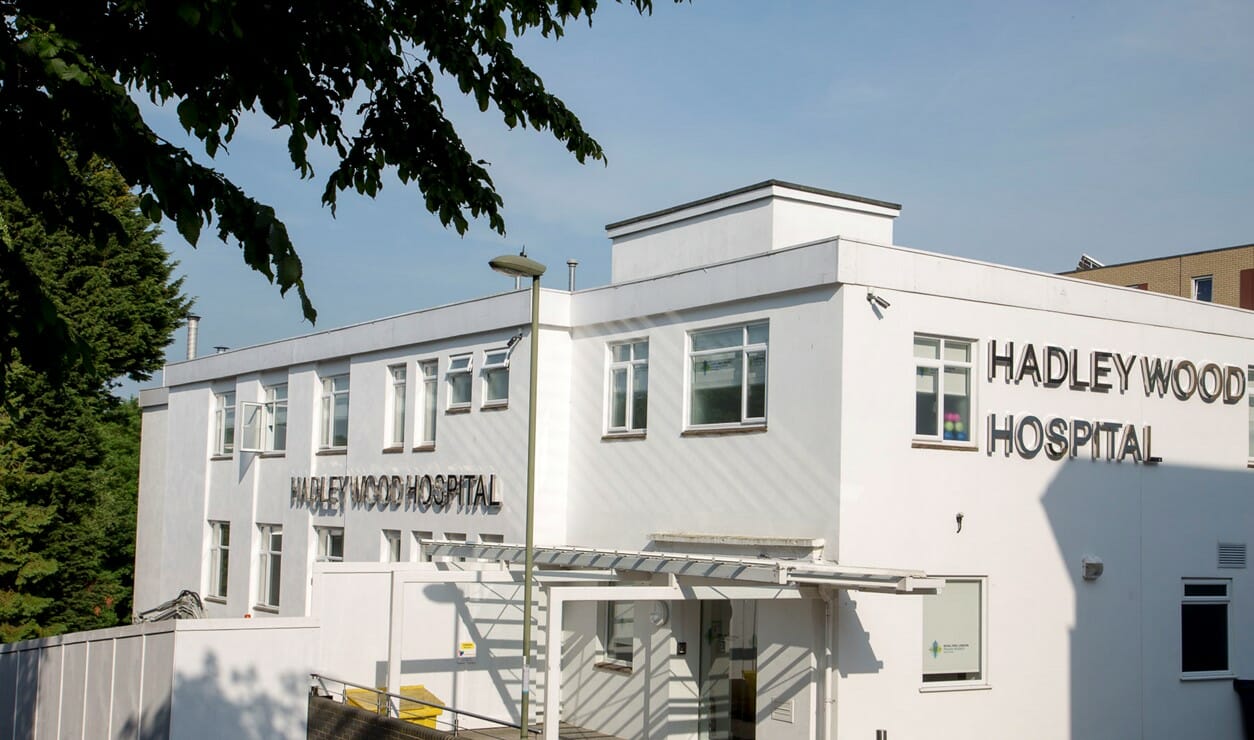Cystoscopy

Our private Cystoscopy services are provided at the Hadley Wood Hospital, High Barnet.
To find out more about our hospitals click here:
A cystoscopy is a procedure that enables doctors to look inside the bladder using a tool called a cystoscope – a tube with a small camera on the end, which relays images to a computer screen for closer examination.
Reasons for a cystoscopy
While a cystoscopy is often performed to investigate symptoms – such as chronic pelvic pain, blood in the urine and difficulty passing urine – additional procedures or treatments can be carried out at the same time too. This includes removing a tissue sample (biopsy) from inside the bladder for closer analysis in the lab if bladder cancer is suspected, or removing bladder stones.
There are two main types of cystoscopy: a flexible cystoscopy, where a very slim, flexible cystoscope is used, or a rigid flexible, which uses a slightly wider, rigid cystoscope. For both methods, the cystoscope is inserted via the urethra (the tube that carries urine from the bladder out of the body).
Flexible cystoscopy
A flexible cystoscopy is generally quicker and more straightforward. The procedure is carried out on an outpatient basis, meaning you’ll be able to go home shortly afterwards. A local anaesthetic gel will be applied to the urethra first to numb it, so it shouldn’t be painful although it may still feel a little uncomfortable.
Once ready, the specialist will carefully insert the cystoscope until the camera reaches your bladder. Men may experience some discomfort when the cystoscope passes through the prostrate but this is only momentary. Once the cystoscope is in place, a small amount of sterile water will be slowly inserted into the bladder via the tube, which enables the specialists to get a better view of the bladder lining. It usually only takes a few minutes for the inspection to be completed, after which the cystoscope will be gently removed – however, sometimes additional minor procedures, such as removing a stent or taking a biopsy, may be performed first.
Rigid cystoscopy
A rigid cystoscopy is essentially the same procedure but because a larger, non-flexible cystoscope is used, the procedure is carried out either under general anaesthetic or with a spinal anaesthetic (an injection into the back which numbs the lower body for a few hours). The larger cystoscope enables greater and more involved additional treatments to be carried out. Depending on the nature of these procedures, a catheter may be inserted into your urethra after the cystoscope is removed. This will usually only be needed for up to 24 hours. You will need to stay in hospital until the initial effects of the anaesthetic have worn off and your consultant can see that you are able to pass urine normally. However, most people are still able to go home later the same day, or the following morning.
Aftercare
With both flexible cystoscopies and rigid cystoscopies, you may experience some slight stinging and bleeding on passing urine afterwards, but this should resolve after a few days. There is also a slight risk of developing a urinary tract infection (you may be given antibiotics ahead of the procedure to limit this risk). Your consultant will discuss any potential risks with you during your consultation beforehand, and ensure you are given all the aftercare advice you need before going home.
